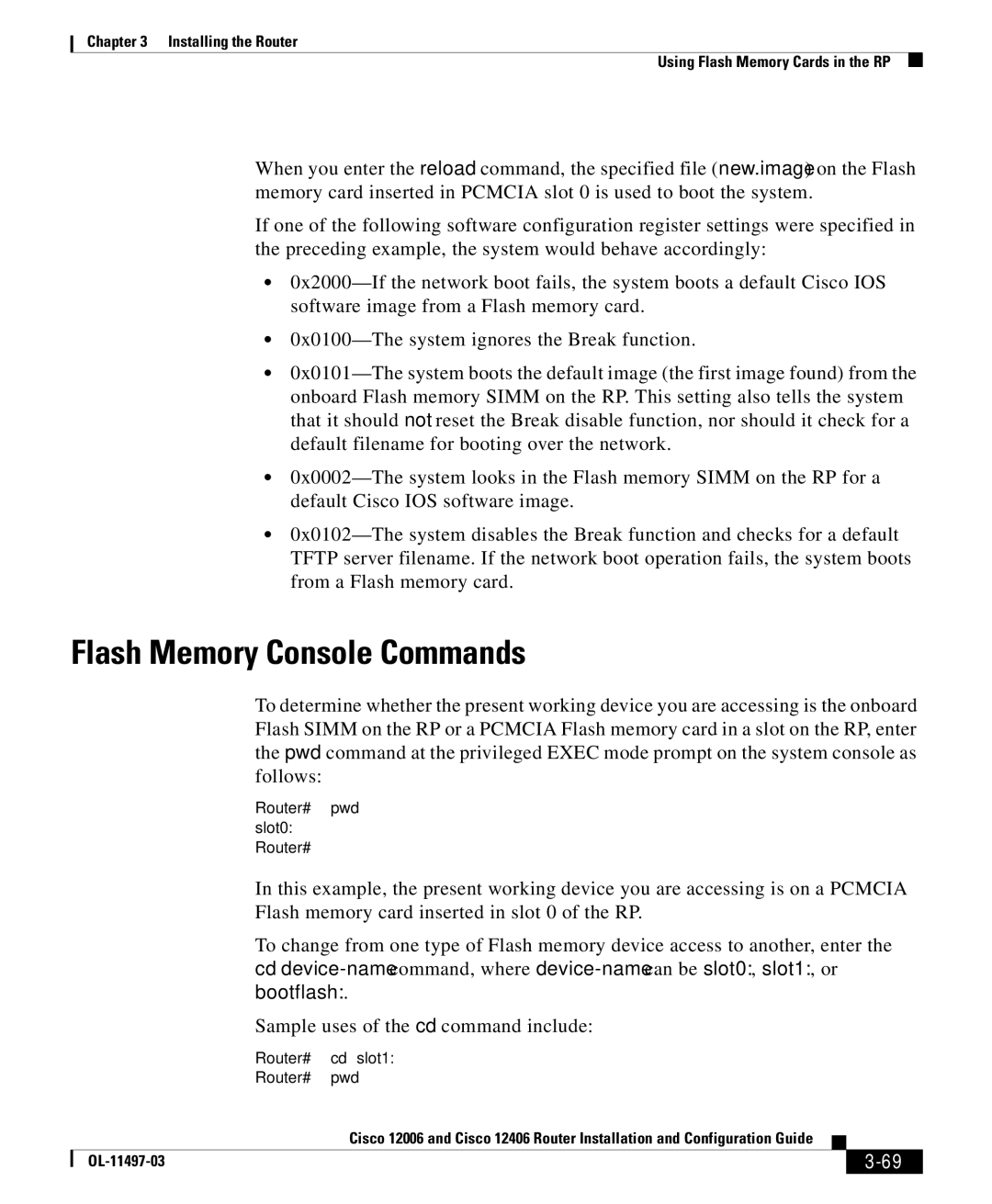Chapter 3 Installing the Router
Using Flash Memory Cards in the RP
When you enter the reload command, the specified file (new.image) on the Flash memory card inserted in PCMCIA slot 0 is used to boot the system.
If one of the following software configuration register settings were specified in the preceding example, the system would behave accordingly:
•
•
•
•
•
Flash Memory Console Commands
To determine whether the present working device you are accessing is the onboard Flash SIMM on the RP or a PCMCIA Flash memory card in a slot on the RP, enter the pwd command at the privileged EXEC mode prompt on the system console as follows:
Router# pwd slot0: Router#
In this example, the present working device you are accessing is on a PCMCIA Flash memory card inserted in slot 0 of the RP.
To change from one type of Flash memory device access to another, enter the cd
Sample uses of the cd command include:
Router# cd slot1:
Router# pwd
|
| Cisco 12006 and Cisco 12406 Router Installation and Configuration Guide |
|
|
|
|
| ||
|
|
| ||
|
|
|
